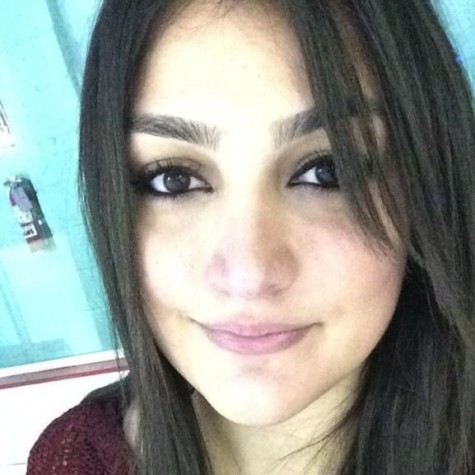As a child, I always dreaded the month of April, for it symbolized fear and the death of my ancestors and fellow Armenians. As March came to a close, my stomach suffered deep pangs of anxiety while my nights were haunted by thoughts of murder and separation from my family.
While watching news segments featuring pictures of anorexic children, men and women with their heads cut off, and hearing chilling, first-hand accounts about Ottoman soldiers ripping fetuses out of pregnant women, I assumed that Turks would try killing Armenians again once April 24 drew near. I feared that, like my ancestors, I would never see my family again. To a 4-year-old, particularly one with separation anxiety, this was the worst possible scenario.
This bone-deep fear led me to view Turks with a certain degree of animosity, despite my parents’ efforts to remind me that not all Turks were bad and that some had helped rescue victims of the genocide.
It was not until I was about 7-years-old and witnessed a group of younger, Armenian boys bully a half-Armenian, half-Turkish kid, who could not have been more than four or 5-years-old, that I began to feel ashamed of my initial hostility. Though I was still unsure about my feelings toward Turks, a people that, to me, symbolized the Ottoman perpetrators of the genocide and the denial of the atrocities, I was sick with guilt over the little boy, standing helplessly at the playground while one kid, a classmate of my younger sister’s, spit at him and hurled accusations of murder.
Upon approaching him and realizing he did not have horns sticking out of his head, I gave him my Kool Aid and told the other kids to go away. I sat with him until his parents returned from their stroll and took him away. Years later, my encounter with this child led me to me realize that the vicious cycle of hostility between Armenians and Turks does not help solve any of our problems or bring the Republic of Turkey any closer to admitting that the genocide happened.
For nearly a century, Armenians have sought the just affirmation of the genocide. The stories and accounts that have been passed along by victims and witnesses are mind-boggling — crude enough to make anyone cringe, as Ottoman soldiers were indiscriminate over whom they abused. People of all ages were targets of rape, execution, and deprivation of food and water as they were marched across the Syrian Desert. This is enough to create years of bitterness between any two groups of people.
More recently, Christians and Armenians in the Syrian town of Kessab near the Turkish border have faced attacks and executions by Islamist rebels, who are believed to have Turkish sponsors. The state department released a statement saying they are “deeply troubled” by the violence endangering Kessab Armenians and Christians, while Congressman Adam Schiff, Dem-Glendale, expressed concern over the troubling reminders of the Armenian Genocide.
Whether Christian Armenians are once again being targeted by extreme Islamists and Turks or are just caught in the crossfires of the Syrian Civil War (two likely scenarios), the fact remains that people are dying and being forced out of their homes. People have been killed across Syria as a result of the Uprising since March 2011. The Kessab attacks, however, hit close to home for many Armenians because they are highly reminiscent of the 1915 atrocities, particularly as they take place a month before genocide commemoration day.
Even after 99 years since the Armenian Massacres, there is still hostility between Turks and Armenians and Christians and Muslims. With so much history and violence between the groups, it was inevitable that their descendants today would fall victim to a legacy of hate, murder, and both religious and political conflict, as evident by the attacks against Armenians in Kessab.
Naturally, the events in Kessab will only ignite more hostility and fuel tensions.
However, as I scroll through Facebook and Instagram, seeing posts and photos of the message “Save Kessab,” I cannot help but wonder why “Save Syria” was not trending, at least on my social media pages, when non-Armenians and Christains were beng killed thorughout the region.
Similarly, during the 1990s, Americans were more concerned over the Bosnian Genocide than they were over the Rwandan, simply because the Bosnians were white and most people could relate more.
People should care about the murder of others regardless of race or religion. Genocides, rapes, conflicts between differing cultures — these are all part of the human legacy, a legacy that befalls succeeding generations.
The attacks in Kessab should serve as a reminder that antipathy and aggression only breed more resentment and bloodlust, adding to years of animosity and conflict.
Years from now, I am sure a Turkish or Muslim child will be condemned for his background by the descendants of people who were victimized for whatever massacre that took place in the past, just as I am sure a Christian or Armenian child will want to hide their identity out of fear when around Muslims or Turks.
This is the legacy we leave behind. This is the future we create.

